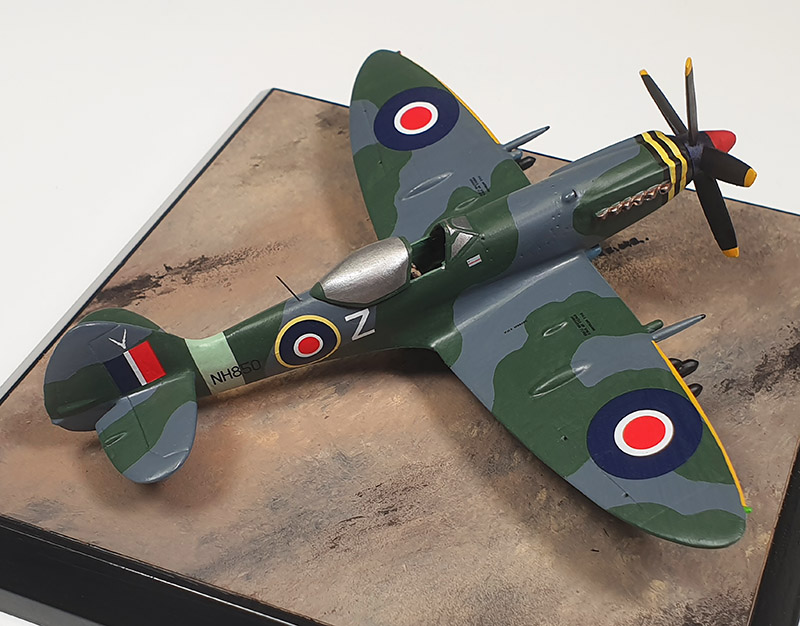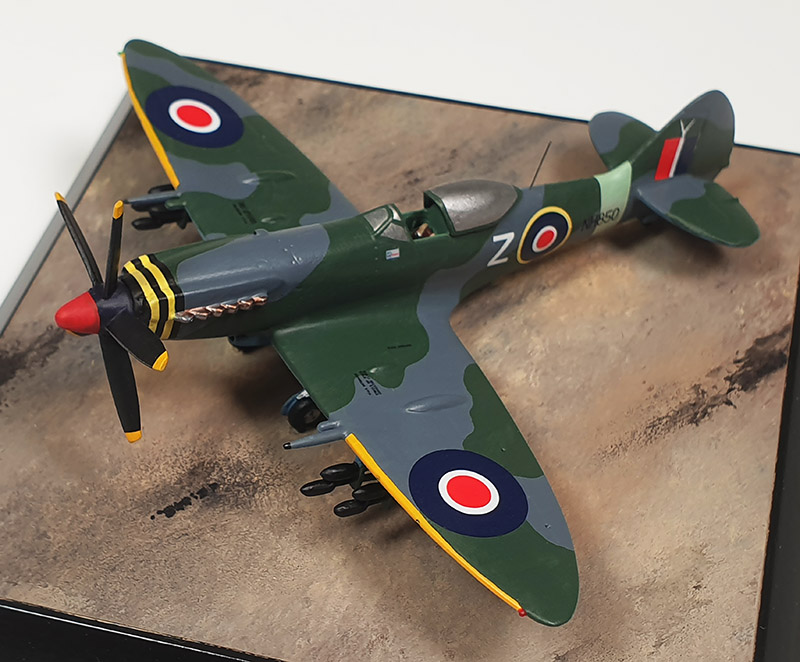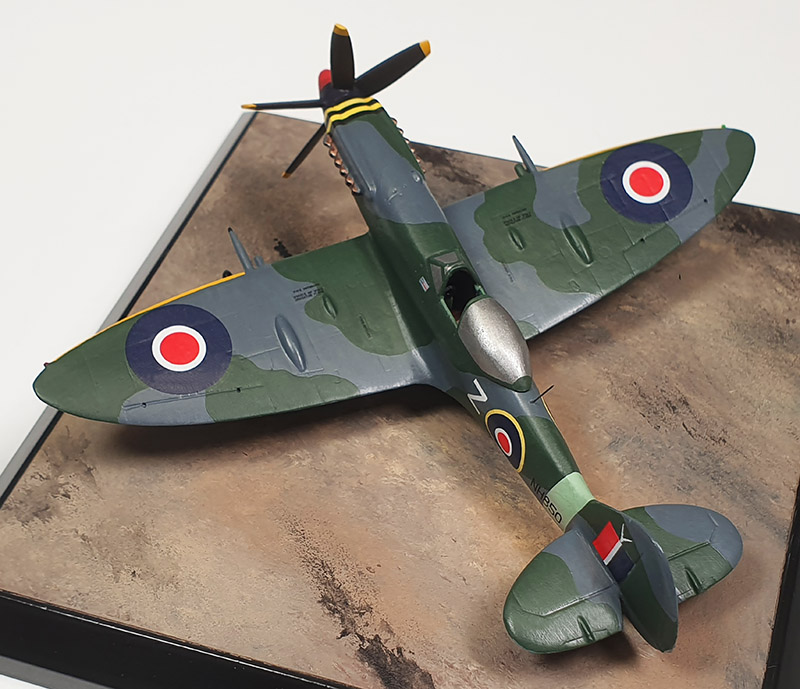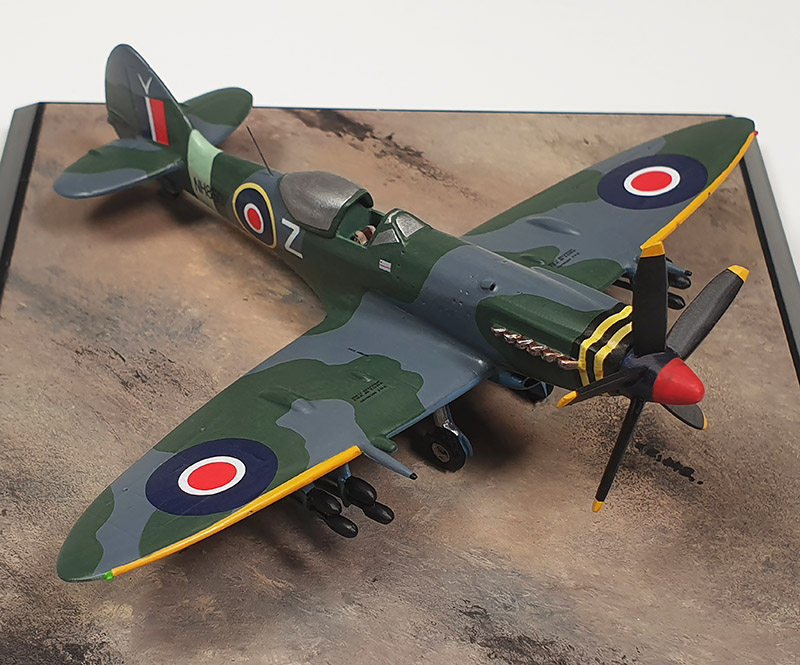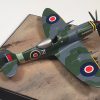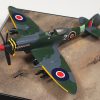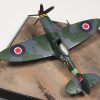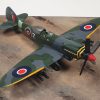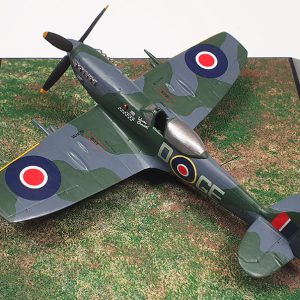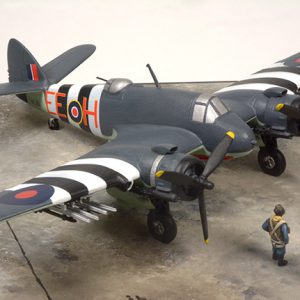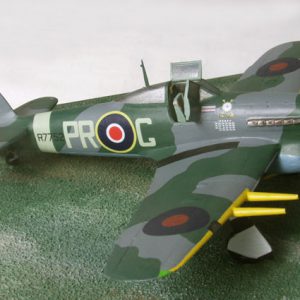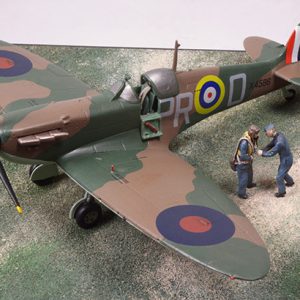Supermarine Spitfire FR Mk 18 NH850 ‘Z’
60 Squadron, Seletar, Malaya, 1949.
The origins of the Spitfire FR Mk 18 was in the development of a “Super Spitfire” by fitting a Rolls-Royce Griffon engine to the Spitfire Mk VIII, which was seen as the ultimate Merlin-engined variant. NH850 had initially been part of a Spitfire Mk VIII order, but was completed as part of an initial development batch of eleven of the new Spitfire Mk XVIII built at Southampton; following trials in early 1945, by July it had been passed to 33 Maintenance Unit, and on 30 January 1946 was with 76 MU. It was embarked on Pentarkete on 18 February, arriving in India on 17 March, and was allocated to Air Command South East Asia on 28 March. By April 1949 it was with 60 Squadron at Seletar.
60 Squadron finished the war flying Thunderbolts, and kept them, on operations in the Netherlands East Indies, until the end of 1946. It then moved to Malaya, and in January 1947 re-equipped with the Spitfire FR Mk 18, using a mix of fighter and fighter reconnaissance marks; these had apparently been in storage virtually since they came from the production line, and were still finished in late-war Fighter Command colours, including ‘sky’ fuselage band and yellow leading edges. The yellow and black stripes behind the spinner had originally been applied for an Empire Air Day display in May 1948, with the “markhor’s head” (Afghan mountain goat) from the squadron badge above the fin flash, and these were to mark the unit’s Spitfire FR Mk 18 until they were replaced by Vampires at the beginning of 1951. By July 1949 spinners had been painted in flight colours, red for ‘A’ and blue for ‘B’, but as NH850 was the squadron commander’s aircraft, it carried both, and may have been flown by Sqn Ldr W. G. Duncan-Smith. The squadron was engaged in anti-terrorist operations as part of Operation Firedog, and as well as their cannon the aircraft could carry bombs or rocket projectiles. NH850 was allocated to storage in January 1951, and struck off charge in March.


